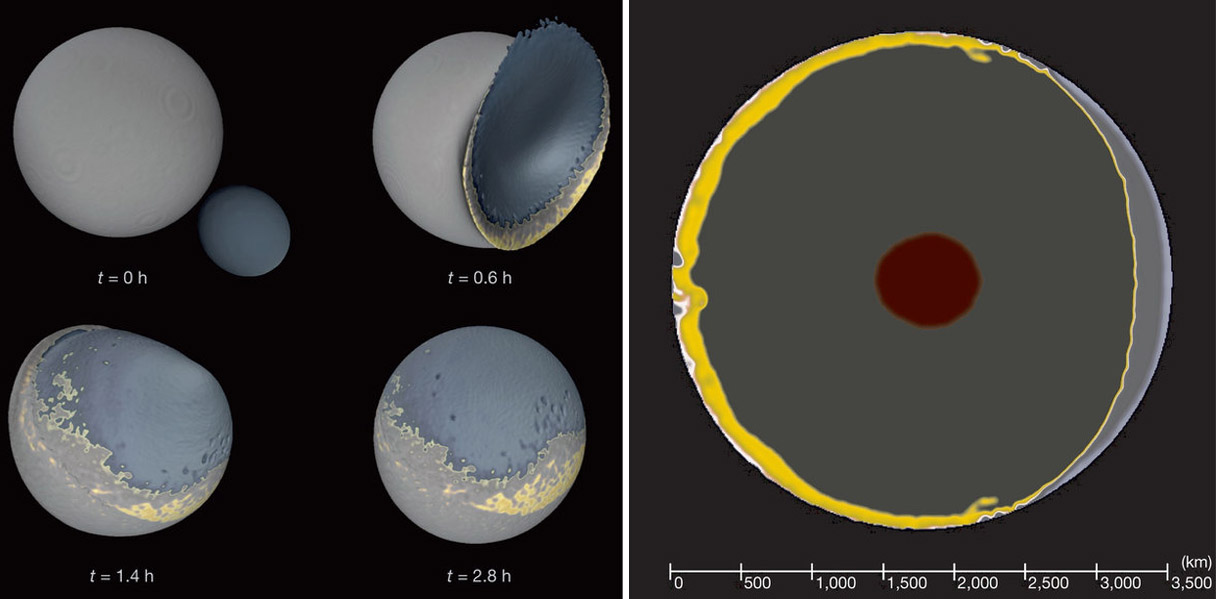August 5, 2011
Sister Splat

images from Jutzi & Asphaug paper in Nature. Left four images show proposed sequence of impact, and right image depicts added layer (gray) of pancaked sister moon, and concentrated impact melt (yellow).
A new theory offers an explanation for the thick farside crust and concentration of volcanism on the nearside. Jutzi & Asphaug propose that our Moon was not the only significant body that formed by the giant splat at the end of accretion of Earth. A sister moon about 1200 km in diameter was initially trapped in a Trojan orbit, but finally collided with the Moon about 4.4 billion years ago. Based on sophisticated numerical modeling (tracking 2.5 million particles) Jutzi & Asphaug determined that the collision would be at such a low veolicty that rather than cataclysmic destruction and excavation of a crater, the sister moon would flatten like a pancake and wrap itself around one side of our Moon. That would thicken the crust on the impacted side - now known as the farside. The authors speculate that during the 100 million years between our Moon's formation and the sisterly impact, the magma ocean girding our Moon would have crusted over and only remained as a molten layer under a 20 km thick crust. The gentle impact is proposed to have caused the remaining magma ocean to be squeezed around to the side opposite the impact and be concentrated there - providing the heat and KREEP concentration to generate the billion year spasm of nearside volcanism that created the maria. This idea is still in early stages of development but the delayed slow speed collision of a sizeable sister moon comes from the calculations. The state of cooling of our Moon and the possible squeezing of a magma ocean to the opposite hemisphere is mostly a grand speculation. The idea is new thinking to explain an old problem - the differences between the near and far sides - and has captured the popular imagination, being the closing item on the national news last night. Some day we may know if it right.
Chuck Wood
Technical Details
M. Jutzi & E. Asphaug (2011) Forming the lunar farside highlands by accretion of a companion moon. Nature 476, 69–72 (04 August 2011).
Yesterday's LPOD: Putrid Ridge Spoils Spurr
Tomorrow's LPOD: Layers of History
COMMENTS?
Register, Log in, and join in the comments.



